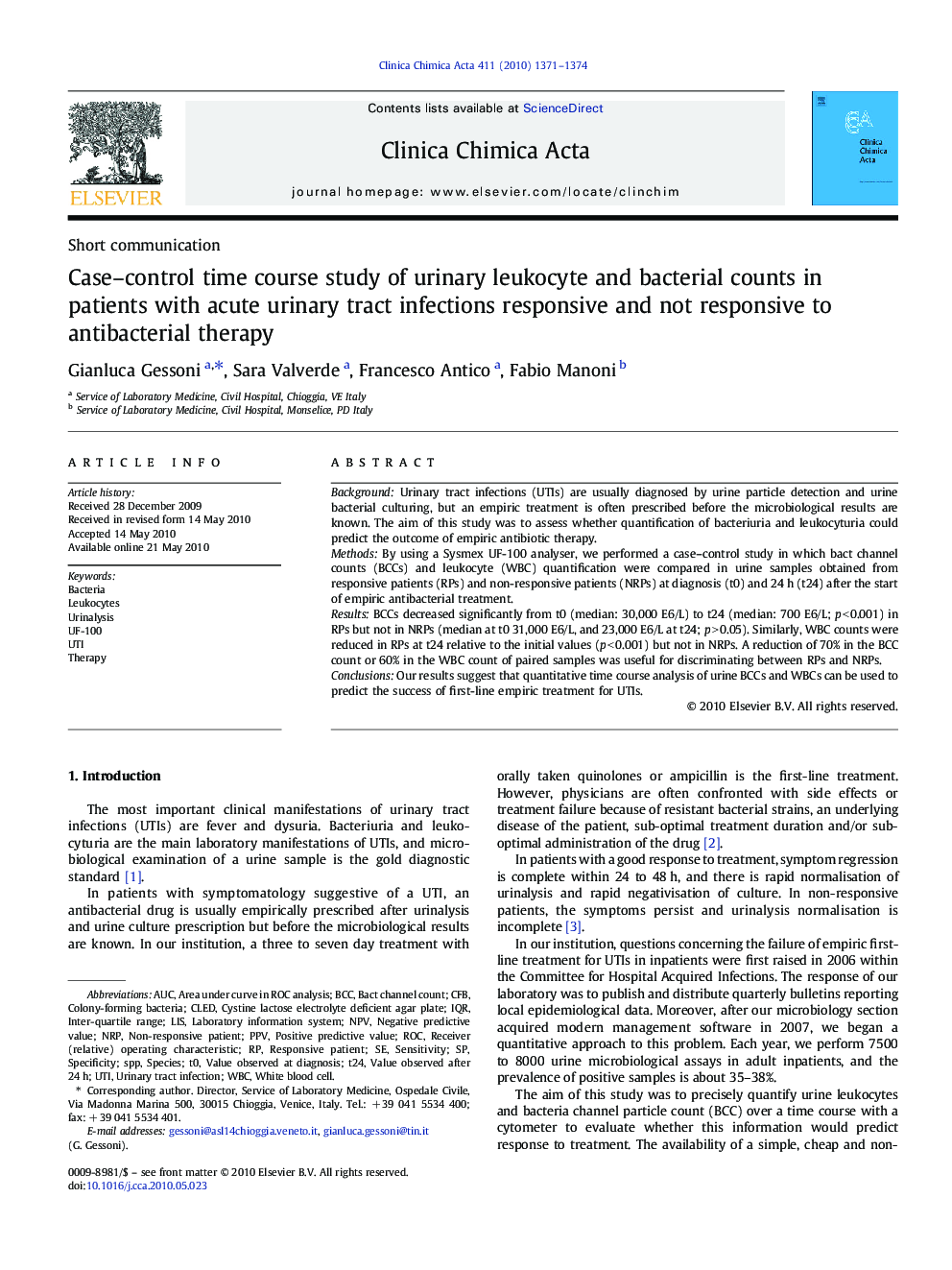| Article ID | Journal | Published Year | Pages | File Type |
|---|---|---|---|---|
| 1965750 | Clinica Chimica Acta | 2010 | 4 Pages |
BackgroundUrinary tract infections (UTIs) are usually diagnosed by urine particle detection and urine bacterial culturing, but an empiric treatment is often prescribed before the microbiological results are known. The aim of this study was to assess whether quantification of bacteriuria and leukocyturia could predict the outcome of empiric antibiotic therapy.MethodsBy using a Sysmex UF-100 analyser, we performed a case–control study in which bact channel counts (BCCs) and leukocyte (WBC) quantification were compared in urine samples obtained from responsive patients (RPs) and non-responsive patients (NRPs) at diagnosis (t0) and 24 h (t24) after the start of empiric antibacterial treatment.ResultsBCCs decreased significantly from t0 (median: 30,000 E6/L) to t24 (median: 700 E6/L; p < 0.001) in RPs but not in NRPs (median at t0 31,000 E6/L, and 23,000 E6/L at t24; p > 0.05). Similarly, WBC counts were reduced in RPs at t24 relative to the initial values (p < 0.001) but not in NRPs. A reduction of 70% in the BCC count or 60% in the WBC count of paired samples was useful for discriminating between RPs and NRPs.ConclusionsOur results suggest that quantitative time course analysis of urine BCCs and WBCs can be used to predict the success of first-line empiric treatment for UTIs.
